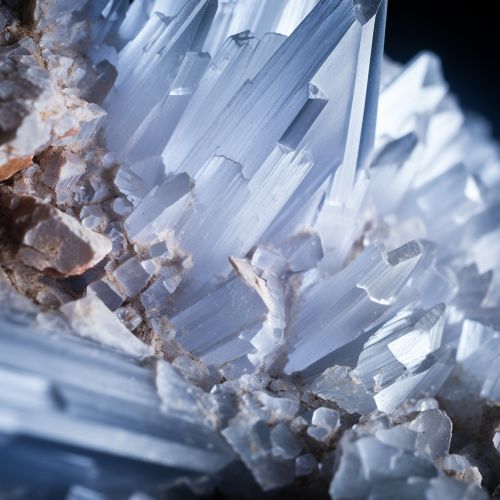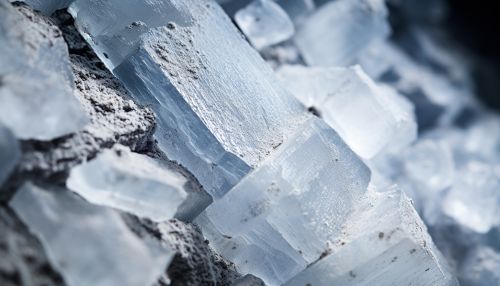Barium
Overview
Barium is a chemical element with the symbol Ba and atomic number 56. It is the fifth element in Group 2, a soft silvery metallic alkaline earth metal. Due to its high chemical reactivity, barium is never found in nature as a free element. Its hydroxide, known in pre-modern times as baryta, does not occur as a mineral, but can be prepared by heating barium carbonate.
History
Barium was first isolated by Sir Humphry Davy, an English chemist, in 1808 through the electrolysis of molten barium salts. Davy, using his newly invented voltaic pile, was able to extract barium from its compounds, thus identifying it as a new element. The element was named by Davy after "barys", the Greek word for "heavy", due to its high density.
Physical Properties
Barium is a soft, silvery-white metal, with a slight golden shade when ultrapure. The silvery-white color of barium metal rapidly vanishes upon oxidation in air yielding a dark gray oxide layer. Barium has a medium specific weight and good electrical conductivity. Solid barium exhibits a face-centered cubic crystal structure.
Chemical Properties
Barium is chemically similar to magnesium, calcium, and strontium, but even more reactive. It always exhibits the oxidation state of +2. Most of the compounds are colorless. Barium has a strong affinity for oxygen and an even stronger one for chlorine. Barium reacts with almost all the non-metals, forming often poisonous compounds.
Occurrence and Production
Barium is the 14th most abundant element in the Earth's crust. It is primarily derived from the minerals barite (barium sulfate) and witherite (barium carbonate), the former being the most common source of barium and its compounds. Barium can also be found in the oceans and in some mineral springs. Commercially, barium is produced through the reduction of its ores with aluminum or silicon in a high-temperature environment.
Applications
Barium has a wide variety of applications. It is used in the production of CRT screens where it acts as a coating for the interior of the picture tube to protect the user from radiation. It is also used in the manufacturing of glass and ceramics, oil drilling, rubber, paint, and in the paper and textile industries. Barium compounds are used as pigments in paints and inks, in the production of rubber and plastics, and in the manufacture of pharmaceuticals and cosmetics.
Biological Role and Effects
Barium has no known biological role, and it is, in fact, harmful to human health. It can accumulate in the muscles and cause damage to the nervous system resulting in changes in heart rhythm or paralysis. Certain barium compounds (like barium sulfate) are however used in medical imaging of the gastrointestinal tract.
Environmental Impact
Barium is released into the environment through both natural processes and human activities. The major impact of barium on the environment is its contribution to air pollution, soil contamination, and water pollution. In the atmosphere, it exists as fine dust that can cause respiratory problems in humans and animals.
See Also


